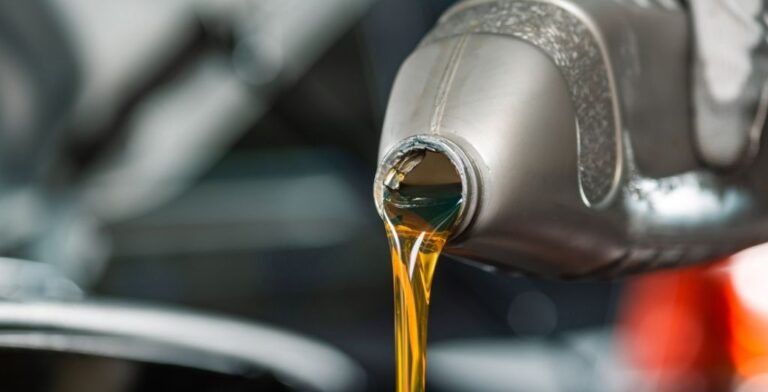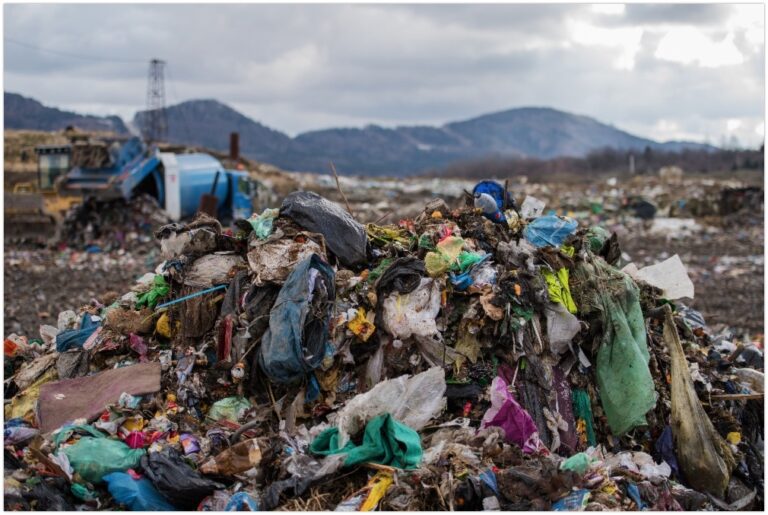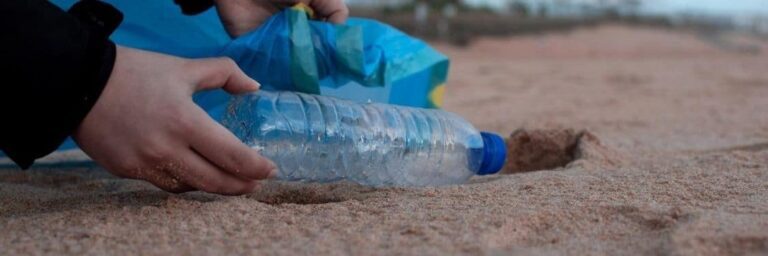As much as the ocean is one of the most expansive, mysterious, unexplored and diverse places on earth, human activities on land are threatening the whole oceanic ecosystem. There are various sources of ocean pollution that include chemicals, residential, agricultural and industrial waste, noise, invasive organisms, etc. When such pollutants enter the sea, they cause a lot of harmful effects.
Here are some of the most startling facts about ocean waste.
1) According to a recent study, there are about 1.4 billion lbs. of trash is in the ocean. That translates to about 8 million marine items every year entering the sea. Out of this 8 million, 5 million items enter the sea via storms and direct off board disposal by humans.
2) Out of all the sea waste that finds its way into the sea, 70% remains on the sea bed, while the rest is either washed up ashore or keeps floating in the ocean. The items washed ashore make up most of the beach trash that you’re likely to come across in many beaches around the world.
3) Marine transportation accounts for only 10% of all ocean litter. This type of debris includes cigarette butts, abandoned fishing nets, plastic bottles, and spilt oil from transport vessels. The entry of this pollutants threatens the well-being of any marine ecosystem.
4) In 2011, the ‘Clean Ocean Action’ listed hair curlers, a water cooler, car bumpers, and a fire extinguisher as the weirdest things found on the beach in their annual Beach Sweep Report. The list, which is commonly known as the Roster of Ridiculous names some of the most bizarre things found on different waterfronts.
5) Over one million sea birds die each year because of marine litter. Three hundred thousand porpoises and dolphins die each year because of entangling themselves with different kinds of plastic waste. Similarly, hundreds of thousands of sea mammals die because of ocean pollution periodically.
6) Plastic makes up the biggest percentage of oceanic waste and it mostly comes from human activities. Mind you, plastic takes over 1000 years to completely degrade since it is not biodegradable. All the littering inside the sea has endangered so many species.
7) Apart from trash, oil, and solid waste, other sources of contamination like industrial race (heavy acids and metals), nuclear reactors, and drained sewage also contribute highly to ocean pollution. These types of wastes have the ability to destroy the behaviour, biochemistry, growth, and reproduction of marine life.
8) In the sea, the small animals at the bottom of the food chain are usually the first to absorb chemicals from waste products as part of their food. Larger animals then eat many small animals and the concentration of chemicals increases in their bodies. As a result, the animals at the top of the food chain have higher levels of contamination than the water around them.
9) Humans get affected by sea waste after eating toxic sea animals with chemical contamination. The chemical ingestion can lead to many health problems that include immune system damage and cancer.
10) The aluminium can, plastic bottle, packing material, and shoes can easily reach the sea when not disposed-off correctly. This waste can also get to the beach after washing ashore, consequently affecting the local tourism industry.
11) There are many garbage patches around the world, and they are areas with a high concentration of marine debris, in the form of micro-plastics. These micro-plastics creating a thin layer over the ocean surface.
12) Over the recent years, large crude oil companies have been significantly responsible for pollution due to spillages that occur during ballasting, discharging, loading/ unloading, tank cleaning etc. Other than crude vessels, oil slicks can also occur at drilling rigs and offshore platforms.
13) The plastic found in the ocean can circle the earth approximately 400 times. Also, the micro-plastics in the sea are more than the Milky Way Stars.
14) Noise pollution is a relatively new threat to marine life. It is because of the fact that sound waves can travel hundreds of miles into the ocean. Noise pollution mostly comes from oil exploration air guns and large vessels. The noise causes a lot of distress in marine organisms
15) Ocean-based activities account for 20% of total ocean pollution while land-based activities account for 80%. Things like untreated sewage, agricultural runoff, and surface runoff are non-point sources of ocean pollution. In other words, humans have made the ocean a dumping site.

What can we do about the ocean waste?
Studies show that the oceans have about 26,000 tons of plastic and other wastes like cigarettes and beverage cans causing a lot more havoc than you can imagine. To begin with, plastic is deadly for wildlife such as seabirds, dolphins, seals, and fish. Hundreds of these animals are dying every year from ingesting or entangling themselves in plastic.
The menace does not end there. Fish and other sea animals that have ingested plastic are finding their way into your plate; imagine that for every 3 fish caught for human consumption, 1 fish contains ocean wastes. Thus, it is vital to start taking actionable steps to help reduce marine pollution if you want to enjoy your seafood without having to worry about cancer and other diseases caused by ingesting ocean wastes.
10 things you can do to reduce ocean waste
1) Reduce Single-Use Plastics
Single-Use plastics are those that you use once and throw into the bin. For example, water bottles, plastic bags, dry cleaning bags, straws, take out containers, and many others. From today henceforth, don’t accept single use-plastic that you really don’t need. Instead, go for re-usable versions of such products.
2) Recycle Plastics
When you buy re-usable products, make sure that you recycle them. As it stands now, only 9% of all plastics get recycled yearly. By increasing the number of plastics you re-use, you are actively helping to keep marine pollution out of the ocean.
3) Organise Beach Clean-Up
It is something that you can do with your friends during the weekends and holidays. Many beaches and waterways around the world have ocean waste lying around due to human activities. Organising or participating in a beach clean-ups is one of the most rewarding means of preventing waste from entering the ocean.
4) Buy Products in Bulk
If there are some certain products (with plastic packaging) that you routinely buy, consider purchasing in bigger containers instead of going for many small items over time. Always contemplate the product-to-packaging ratio when buying products like travel-size toiletries, single-serving yoghurts, nuts, etc. It will help to reduce the number of plastics filling the earth’s seas.
5) Champion the Cause
Be part of the people who are fighting for the decrease of activities causing ocean pollution. Many authorities are now enacting laws banning single-use takeout containers, plastic bags, and bottles. By being at the forefront of such causes in your area, you are actively participating in the reduction of marine pollution.
6) Avoid Microbeads
In as much as plastics make up the majority of marine litter, there are many other types of ocean wastes. One example is microbeads that are mainly in toothpaste, body-washes, and face scrubs. The microbeads enter the ocean via the sewer systems, consequently affecting marine species. You can avoid them by going for products with natural exfoliants.
7) Reach Out to Manufacturers
Corporations are the primary producers of ocean wastes and have a bigger footprint when it comes to reducing marine pollution. Therefore, if you purchase a product and think that its mother company should be smarter about the packaging or anything else, simply make contact. Thanks to social media, it is now quite easy to let your favourite company know all the benefits of alternative environmentally-friendly products.
8) Spread the Word
Let your friends, family, workmates, and about anyone you come across know how plastics are affecting their lives. You might be saving the lives of one or two people by sharing vital information about ocean pollution. Don’t forget to inform them about the product alternatives that will help reduce marine pollution.
9) Offer Your Support
Many non-profit organisations are working to reduce marine pollution in many different ways. These entities rely on donations and the goodwill of individuals who care about the state of the oceans as much as they do. You can offer donations or any other kind of support to organisations like 5 Gyres, Algalita, Plastic Soup Foundation etc.
10) Hire a Reputable Waste Company
There are many companies that can assist you with rubbish removal, especially if you deal with a lot of waste whether in your business or home. By employing a reliable firm, you will be able to easily and quickly eliminate all your waste, junk, and unwanted rubbish. It is one of the most convenient ways of dealing with a large sum of waste.
Remember, there is a lot that you can do right in your home to reduce the levels of waste in the seas. If you have any junk that needs to be disposed of, Paul’s Rubbish Removal is here to help.
We would love to help you reduce the amount of rubbish that is dumped on the beach and oceans each year.
Contact the rubbish removal experts today to see how we can help manage your waste on 0407 125 125!







